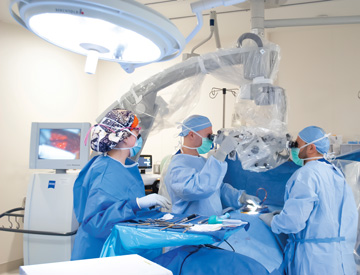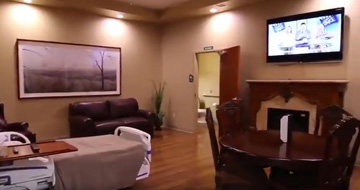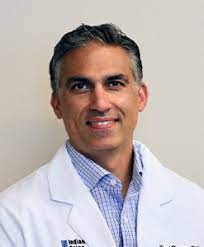Adding these complex surgeries demands careful planning and execution.
 The Surgery Center at Shrewsbury
The Surgery Center at Shrewsbury
SLOW AND STEADY The Surgery Center at Shrewsbury successfully added spine with what its administrator calls a ‘crawl before we walk, walk before we run' approach.
The ability to provide high-quality, accessible outpatient spine care requires specialized equipment and instrumentation, a safety-first focus and a keen awareness of the needs of your community.
Those have been the guiding principles throughout the development of The Surgery Center at Shrewsbury (Mass.) since 2018. The 35,000-square-foot multispecialty center recently added spine to its existing mix of orthopedics and sports medicine surgeries. "From day one of planning and designing our facility, we focused on how to grow those service lines, while also assessing the potential for growth into other specialties and services in the future — especially spine," says Prashanth Bala, MS, MHA, vice president of ASC operations at Shields Health Care Group and acting administrator at the center.
Surgeons have performed about five spine surgeries per month at the center since the first procedure last fall, with plans to slowly increase the number and types of spine cases performed at the facility over time. Here's what Mr. Bala says is necessary to create a successful outpatient spine line:
Physical space. Spine ORs don't need to be super-sized. "At 520 square feet, each of our nine ORs were built to be specialty-agnostic," says Mr. Bala. "An important consideration for a spine OR is to provide the surgeon enough room for the numerous instrument trays they need for each case. Because we knew from the beginning we would eventually add spine, we proactively prepped for it by saving shelf space for everything we could possibly need when we did take that step."
Capital equipment. Mr. Bala says getting his spine surgeons aligned on equipment allowed him to avoid overinvestment based on any one surgeon's preferences. "We controlled costs by focusing first on purchasing equipment and supplies for specific procedures all our surgeons would use, and then strategically adding to our fleet as needed," he says. "Start slow and grow from there."
The two most important spine-specific types of equipment are procedural positioning frames and surgical microscopes. "To save both money and square footage, only buy the frames you absolutely need," says Mr. Bala, who adds that microscopes are important to some but not all surgeons. "Some prefer to use them because they can stand up and see vascular conditions in and around the different components of the spine without needing to hover over the surgical field," he says.
Implants and instrumentation. Spine procedures typically involve five to seven trays. "A key for us was narrowing down exactly how much instrumentation our surgeons would need for a given case," says Mr. Bala, who engaged his vendors and surgeons to reduce the number of trays to three to five. "We call them our spine sets, and all our surgeons have agreed on what they should include," he says. "Reducing the number of trays will help your sterile processing staff as well."
Staffing. Mr. Bala designated a nurse as his facility's full-time "complex care coordinator." The nurse works with surgeons to ensure proper expectations are set with patients and runs an education class for patients so they understand what to expect before surgery, the day of surgery and during recovery. "Once each surgery is scheduled, our complex care coordinator consults with the surgeon on areas of concern about the patient's condition, so we can ensure a safe surgery," says Mr. Bala.
Reimbursement. "Commercial payers have demonstrated enthusiasm for the value of spine cases performed in safe, proven outpatient environments," says Mr. Bala, who notes that CMS returned 14 spine procedures to the inpatient-only list this year. "We continue to work with our commercial payers to inform them of what else our surgeons can do successfully in outpatient spine, and how we can prove it to them."
Surgeons. Mr. Bala's facility isn't letting just any physician enter its ORs. "Our surgeons must have a proven track record of performing spine surgeries in hospitals before they bring cases to our outpatient facility," he says. "To attract top physicians, we have tailored an efficient, safe, standardized program that will make them feel comfortable and confident working here, while ensuring every patient receives the same high quality of care."
Mr. Bala reiterates that careful planning is the key to success. "Everything we've done with our spine line has been a ‘crawl before we walk, walk before we run' approach," he says. "We're slowly ramping up in an appropriate fashion."
.svg?sfvrsn=be606e78_3)



.svg?sfvrsn=56b2f850_5)